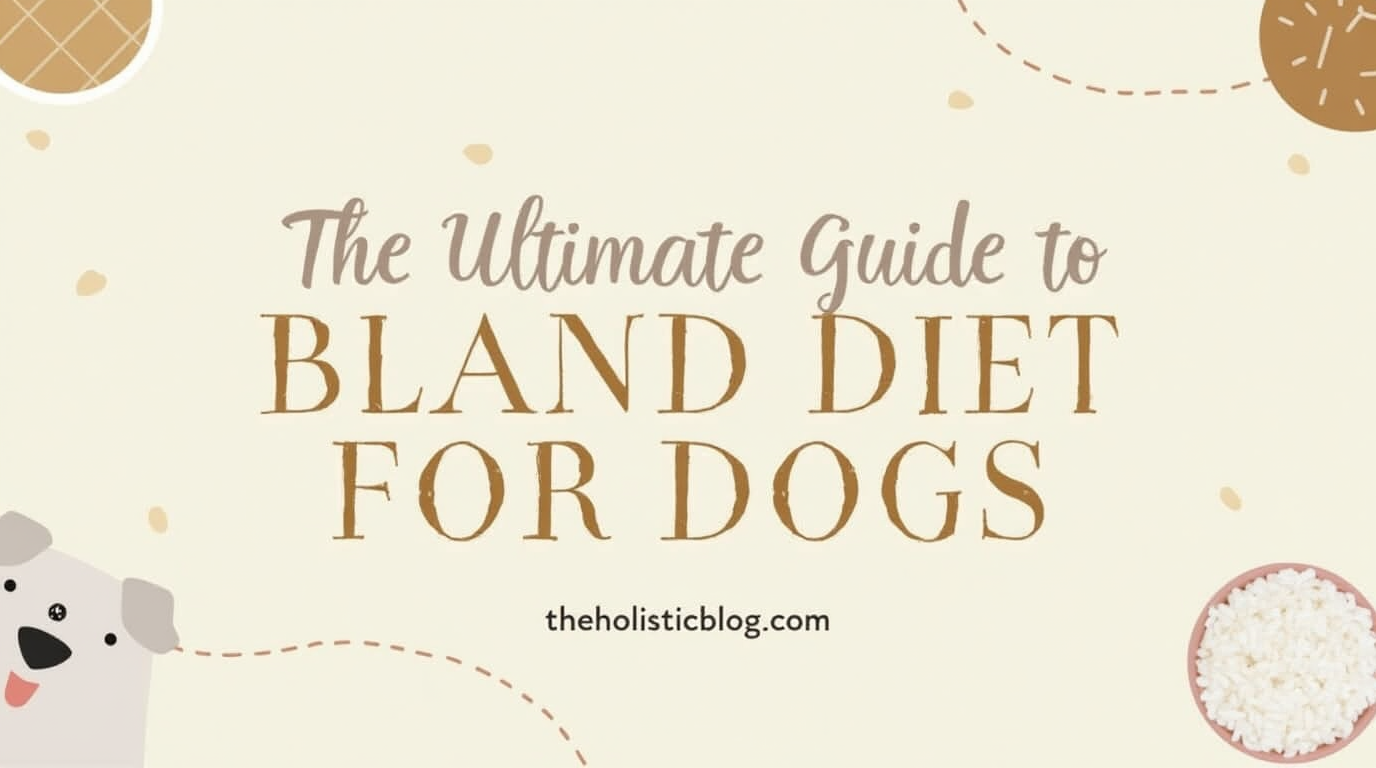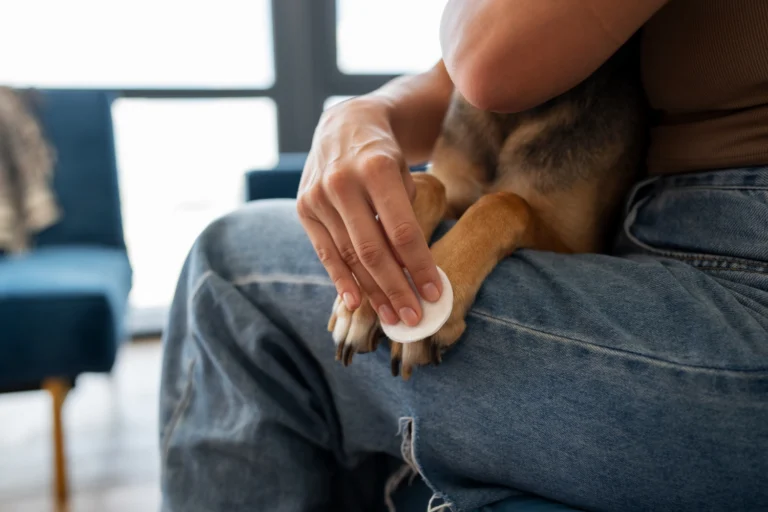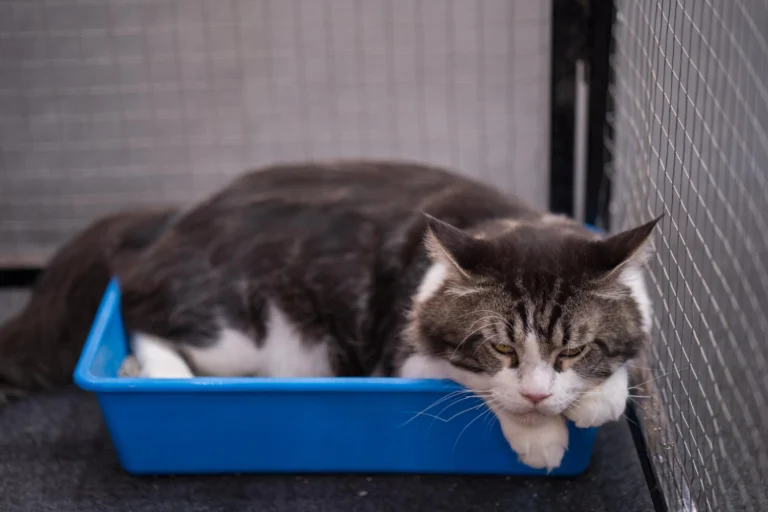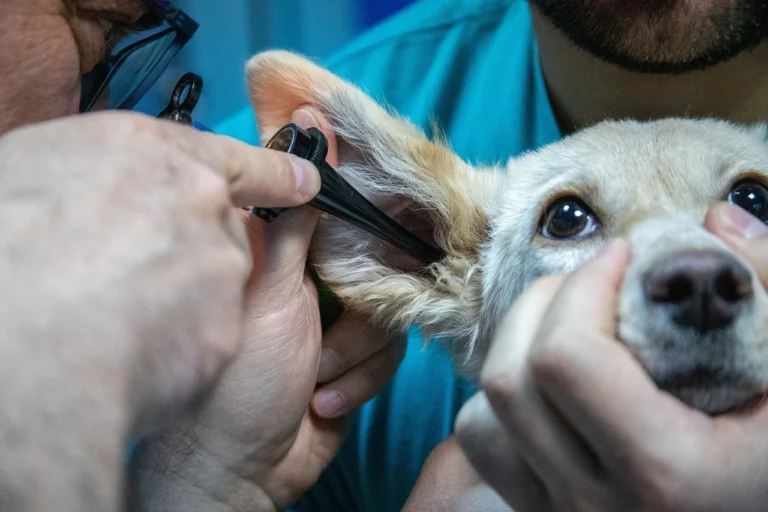Bland Diet for Dogs : 5 Essential Tips for a Healthy Recovery
Table of Contents
Introduction: When Your Best Friend’s Tummy Needs Extra Care
There’s nothing quite as heartbreaking as watching your four-legged companion suffer in silence. The pained expression, the reluctance to move, and that peculiar way they curl up tightly when their stomach hurts—these silent signals speak volumes. When my Golden Retriever, Max, experienced his first severe bout of digestive distress, I felt utterly powerless. No matter how many comforting words I whispered or gentle strokes I offered, I couldn’t communicate that the discomfort would pass.
If your furry family member is currently battling digestive troubles, you’re likely experiencing that same feeling of helplessness. Fortunately, veterinarians often recommend a bland diet for dogs as a gentle, restorative approach to nutrition during these challenging times. This temporary dietary adjustment often makes a remarkable difference in your dog’s recovery journey and overall comfort level while their digestive system heals.
What Exactly Is a Bland Diet for Dogs?
Understanding the Basics
Unlike the complex commercial dog foods lining pet store shelves, a bland diet for dogs strips nutrition down to its fundamental elements. This simplified approach consists of easily digestible, low-fat, and uncomplicated foods that treat your dog’s digestive system with exceptional gentleness.
Commercial dog foods typically contain numerous ingredients, preservatives, flavor enhancers, and varying fat levels—all potential irritants to an already sensitive stomach. The bland diet philosophy eliminates these complications, giving your dog’s gastrointestinal tract the opportunity to rest, recover, and reset.
Key components of an effective bland diet include:
- Plain, low-fat protein sources (typically boiled, unseasoned chicken breast or lean ground turkey)
- Simple, easily digestible carbohydrates (usually white rice or plain pasta)
- Absolutely no seasonings, oils, additives, or flavorings
- Limited or completely eliminated fiber content
- Carefully controlled portion sizes appropriate for your dog’s weight
This straightforward nutritional approach might seem overly simplistic, but its effectiveness for short-term digestive support has made it a cornerstone recommendation among veterinary professionals for decades.
When Should You Feed Your Dog a Bland Diet?
Recognizing the Right Circumstances
It’s important to understand that a bland diet for dogs isn’t an everyday feeding solution, but rather a strategic, short-term intervention designed for specific health conditions. Knowing precisely when to implement this special nutritional approach can make a significant difference in your pet’s recovery timeline.
Common situations where a bland diet proves beneficial include:
- Recovery periods following vomiting episodes
- Management of acute or persistent diarrhea
- Post-surgical care when regular digestion might be compromised
- During and after gastrointestinal infections
- Transitioning periods between different food types
- Recovery from pancreatitis flare-ups
- During inflammatory bowel disease episodes
Signs Your Dog May Need a Bland Diet
Symptoms That Shouldn’t Be Ignored
Recognizing when your dog might benefit from dietary modifications requires attentive observation. Watch for these telltale signs that suggest your canine companion might need a gentler nutritional approach:
- Persistent vomiting (more than 2-3 episodes within 24 hours)
- Diarrhea episodes lasting longer than a day
- Noticeable decrease in appetite or complete food refusal
- Unusual lethargy coinciding with digestive symptoms
- Visible signs of abdominal discomfort (hunched posture, reluctance to be touched around the belly)
- Excessive drooling when presented with regular food
While these symptoms often respond well to dietary intervention, they can also indicate more serious conditions. When in doubt, always consult your veterinarian before making significant changes to your dog’s nutritional regimen.
Veterinarian-Approved Bland Diet for Dogs Recipes
Simple, Effective Options for Recovery
Before embarking on any dietary modification journey, consulting your veterinarian is essential. They can provide personalized guidance based on your dog’s specific health profile, weight, and nutritional needs. That said, these veterinarian-approved bland diet recipes offer excellent starting points for dogs experiencing digestive disturbances.
Basic Chicken and Rice Recipe
The Gold Standard Bland Diet
| Ingredient | Amount for Small Dogs<br>(under 20 lbs) | Amount for Medium Dogs<br>(20-50 lbs) | Amount for Large Dogs<br>(over 50 lbs) |
| Boneless, skinless chicken breast | 1/4 cup (cooked) | 1/2 cup (cooked) | 3/4-1 cup (cooked) |
| White rice | 1/2 cup (cooked) | 1 cup (cooked) | 1.5-2 cups (cooked) |
| Water | 1/4 cup | 1/3 cup | 1/2 cup |
Preparation Instructions:
- Boil chicken completely without any seasonings, oils, or additives
- Cook white rice according to package instructions (avoiding butter or salt)
- Allow both components to cool completely before serving
- Mix together in appropriate proportions based on your dog’s size
- Add the recommended amount of water to increase moisture content and palatability
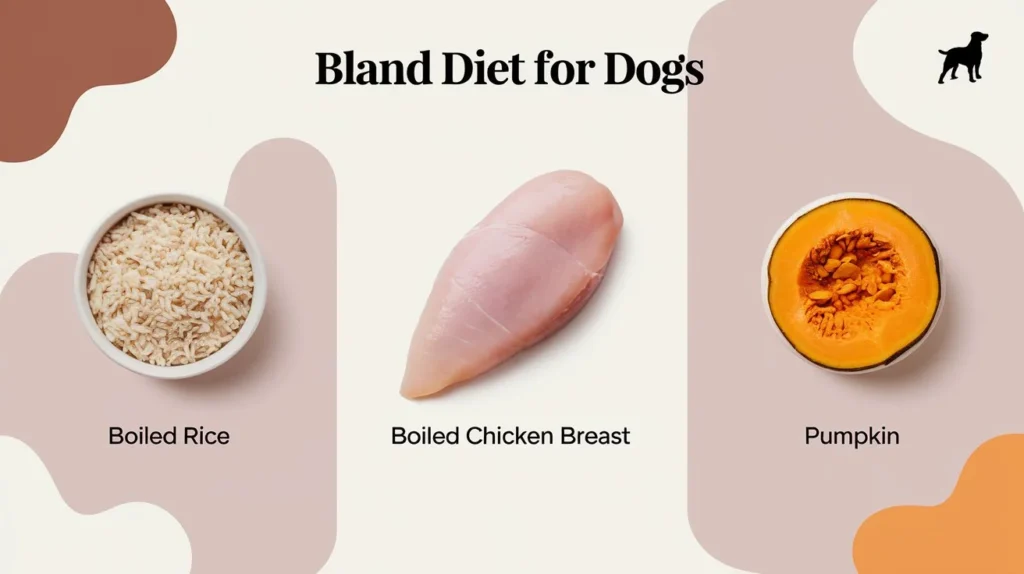
Ground Turkey and Pasta Alternative
A Gentle Variation
For dogs with chicken sensitivities or simply to provide variety, this alternative bland diet recipe offers similar digestive benefits:
| Ingredient | Amount for Small Dogs<br>(under 20 lbs) | Amount for Medium Dogs<br>(20-50 lbs) | Amount for Large Dogs<br>(over 50 lbs) |
| Lean ground turkey | 1/4 cup (cooked) | 1/2 cup (cooked) | 3/4-1 cup (cooked) |
| Plain pasta | 1/2 cup (cooked) | 1 cup (cooked) | 1.5-2 cups (cooked) |
| Water | 1/4 cup | 1/3 cup | 1/2 cup |
Preparation Instructions:
- Brown lean ground turkey thoroughly with absolutely no seasonings or oil
- Cook pasta according to package directions (omitting salt and oil)
- Drain both components thoroughly and allow to cool completely
- Combine in appropriate proportions based on your dog’s size requirements
- Add the suggested water amount to enhance moisture and make the mixture more appealing
How to Properly Implement a Bland Diet for Dogs
Step-by-Step Implementation Guide
Successfully implementing a bland diet requires attention to detail and proper timing to ensure your dog receives appropriate nutrition while their digestive system heals. Follow these guidelines for optimal results:
- Begin with a brief fasting period – For adult dogs (not puppies), veterinarians often recommend withholding food (never water) for 12-24 hours to allow the digestive system complete rest. This step helps reduce inflammation and allows irritation to subside before introducing new food.
- Start with minimal portions – Rather than jumping straight to full meals, offer 1-2 tablespoons of your prepared bland diet every 2-3 hours initially. This cautious approach prevents overwhelming a sensitive digestive system.
- Gradually increase serving sizes – If no vomiting occurs after the initial small portions, slowly increase to more substantial amounts while monitoring your dog’s response carefully.
- Prioritize hydration – Throughout this process, ensure your dog maintains access to fresh, clean water at all times. Digestive issues often lead to dehydration, making proper fluid intake essential during recovery.
- Monitor stool quality diligently – One of the most reliable indicators of improvement is stool consistency. Look for gradual improvement from watery diarrhea to soft but formed stools.
- Transition strategically back to regular food – Once symptoms have clearly resolved, begin the gradual process of reintroducing regular food by mixing increasingly larger portions with the bland diet over 3-5 days.
Common Mistakes When Feeding a Bland Diet for Dogs
Pitfalls to Avoid
Even with the best intentions, pet parents frequently make these avoidable mistakes when preparing and administering a bland diet:
- Adding seemingly harmless seasonings like garlic or onions, which are actually toxic to dogs even in small amounts
- Selecting fatty meat cuts instead of lean options, which can exacerbate pancreatic inflammation
- Rushing the transition back to regular food, potentially triggering symptom recurrence
- Maintaining the bland diet for excessive periods without veterinary guidance, risking nutritional deficiencies
- Failing to adjust portion sizes appropriately based on your dog’s specific weight requirements
- Substituting brown rice for white rice, inadvertently introducing too much fiber for a sensitive system
- Incorporating dairy products like yogurt without specific veterinary approval, potentially causing lactose-related issues
When to Seek Veterinary Care
Know When a Bland Diet Isn’t Enough
While a properly implemented bland diet for dogs effectively addresses many minor digestive disturbances, certain situations demand immediate professional evaluation:
- Symptoms showing no improvement after 48 hours on a carefully managed bland diet
- Presence of blood in vomit or stool (even small amounts)
- Signs of dehydration such as dry gums, lethargy, sunken eyes, or reduced skin elasticity
- Elevated body temperature suggesting fever
- Noticeable abdominal pain, bloating, or a distended abdomen
- Development of additional concerning symptoms like coughing or labored breathing
- Pre-existing conditions such as diabetes or kidney disease that complicate dietary management
Never hesitate to contact your veterinarian when uncertain about your dog’s condition—early intervention often prevents more serious complications and reduces recovery time significantly.
Supplements to Consider with a Bland Diet for Dogs
Supporting Digestive Health
Certain supplements may complement a bland diet and support digestive recovery, though always consult your veterinarian before adding any supplement to your dog’s regimen:
- Canine-specific probiotic formulations to restore beneficial gut bacteria
- Slippery elm bark, which creates a soothing coating for irritated digestive tracts
- Small amounts of pumpkin powder (not pie filling) to provide gentle fiber as conditions improve
- Veterinary-formulated electrolyte solutions to replace those lost through diarrhea
- Digestive enzymes if specifically recommended by your veterinarian for particular conditions
Transitioning Back to Regular Food
Returning to Normal Nutrition
Once your dog’s symptoms have fully resolved, the transition back to their regular diet must be handled with care to prevent relapse:
Day 1-2: 75% bland diet for dogs, 25% regular food Day 3-4: 50% bland diet for dogs, 50% regular food Day 5-6: 25% bland diet for dogs, 75% regular food Day 7: 100% regular food
This methodical approach gives your dog’s digestive system time to readjust to the more complex ingredients in commercial foods without overwhelming recently healed tissues.
Conclusion: Nurturing Your Dog Back to Health
The journey through digestive upset with your canine companion can feel overwhelming, but a properly implemented bland diet for dogs provides an effective tool for recovery. This gentle nutritional approach allows your pet’s digestive system the opportunity to heal while maintaining essential nutritional intake.
By understanding when and how to use this dietary strategy correctly, you’re equipped with a powerful first-response tool for helping your furry family member through uncomfortable digestive episodes. Remember that while a bland diet can work wonders for temporary issues, persistent symptoms always warrant professional veterinary consultation and assessment.
With patience, proper care, and attentive monitoring, your dog will likely return to their energetic, happy self sooner than expected. Next time digestive trouble strikes, you’ll approach the situation with confidence rather than helplessness—and your four-legged friend will undoubtedly appreciate your knowledgeable care during their time of need.
Has your dog ever needed a bland diet? Consider bookmarking this guide for future reference, and share it with fellow pet parents who might benefit from this information. Your veterinarian remains your most valuable resource for personalized advice about your dog’s specific digestive health needs.
Frequently Asked Questions About Bland Diet for Dogs
How long should I keep my dog on a bland diet for dogs?
Most veterinary professionals recommend maintaining a bland diet for dogs for 2-3 days after symptoms completely resolve, then gradually transitioning back to regular food over several days. Without specific veterinary guidance, bland diets shouldn’t be continued for more than 5-7 days total, as they lack complete nutritional balance for long-term feeding.
Can I use brown rice in a bland diet for dogs?
White rice is strongly preferred in a bland diet for dogs because it contains less fiber and proves easier to digest. Brown rice, while nutritionally superior for healthy dogs, contains significantly more fiber that can potentially irritate an already inflamed digestive tract during recovery periods.
Is a bland diet for dogs nutritionally complete?
No, a bland diet for dogs is not nutritionally complete and is only intended for short-term use during digestive recovery. Extended use without veterinary supervision can lead to serious nutritional deficiencies, particularly in growing puppies, senior dogs, or those with pre-existing health conditions.
Can puppies be given a bland diet for dogs?
Yes, puppies can benefit from a bland diet for dogs during digestive upset, but the approach differs slightly from adult dogs. Importantly, fasting is generally not recommended for puppies under 6 months of age due to their smaller energy reserves and developing systems. Always consult your veterinarian before changing a puppy’s diet, as their nutritional needs are particularly critical during growth phases.
How much bland diet for dogs should I feed my pet?
The appropriate amount depends primarily on your dog’s size and activity level. Generally, small dogs (under 20lbs) need approximately 1 cup daily divided into multiple small meals, medium dogs (20-50lbs) require 2-3 cups, and large dogs (over 50lbs) need 3-4 cups. Your veterinarian can provide specific guidance based on your individual dog’s needs.
Can I prepare bland diet for dogs in advance and store it?
Yes, you can prepare larger batches of bland diet and refrigerate portions for up to 3-4 days in airtight containers. You can also freeze individual portions for up to 2 weeks for convenience. Always thaw and reheat refrigerated or frozen portions to room temperature before serving to increase palatability.

